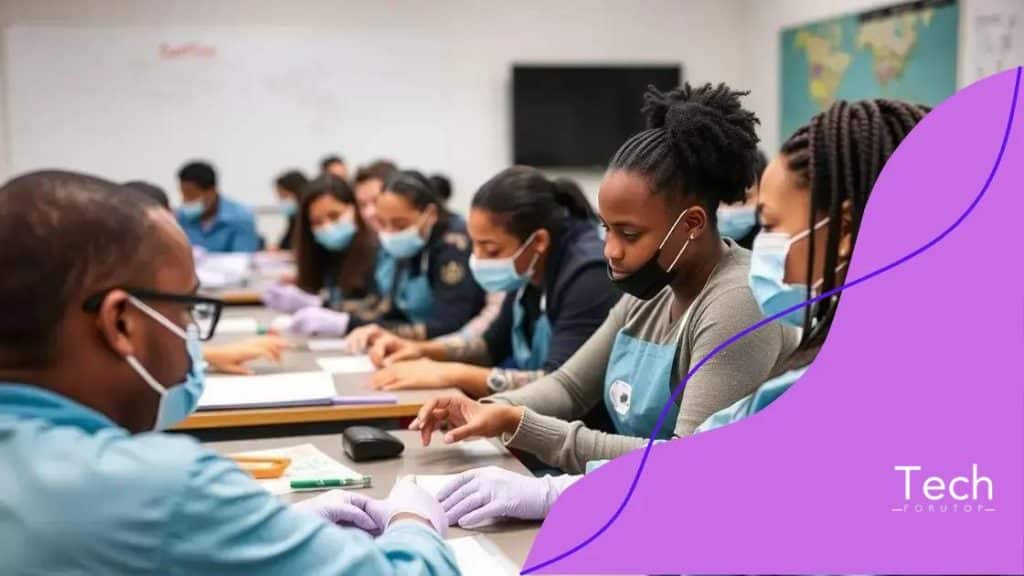Pell Grant access for short-term training opportunities

Pell Grant access for short-term training provides essential financial aid to eligible students, enabling them to afford educational programs that enhance job readiness and career advancement.
Pell Grant access for short-term training can open doors to new career opportunities. Have you considered how this funding can enhance your skills? In this article, we’ll dive into the details of eligibility and application processes.
Understanding Pell Grants
Understanding Pell Grants is crucial for those seeking financial assistance for education. Pell Grants provide funds that do not need to be repaid, making them an excellent option for students.
These grants are typically awarded to undergraduate students who demonstrate financial need. Eligibility depends on various factors, including the student’s expected family contribution (EFC) and enrollment status. It’s essential to understand the specific criteria to maximize your chances of receiving this valuable funding.
Eligibility for Pell Grants
To qualify for a Pell Grant, students must apply through the Free Application for Federal Student Aid (FAFSA). The application process is straightforward and can be done online. Here are some key points about eligibility:
- Must be a U.S. citizen or eligible non-citizen.
- Demonstrate financial need based on EFC.
- Must be enrolled in an eligible program at a college or university.
- Usually limited to undergraduate students; some exceptions for certain graduate programs exist.
Understanding these requirements can significantly impact your college financing. Applying early also helps, as funds are often limited. Once you submit your FAFSA, you will receive a report indicating your eligibility.
Pell Grants can make a significant difference in making higher education affordable. The amount granted varies each year, based on government budgets and funding levels. Staying informed about changes can help plan your education expenses wisely.
Eligibility criteria for short-term training
Understanding the eligibility criteria for short-term training programs is essential for those looking to enhance their skills quickly. These programs offer various financial aids, including Pell Grants, but have specific requirements.
To qualify for short-term training funding, students typically must meet certain criteria. This includes being enrolled in an eligible program that is approved for financial aid. Schools often provide flexible training options that can last from a few weeks to several months.
Key Eligibility Criteria
Here are some important factors to consider when applying for short-term training programs:
- Enrollment Status: You must be enrolled at least half-time in an eligible program.
- Financial Need: Demonstrating financial need is crucial for obtaining funding, including Pell Grants.
- Citizen Status: Applicants must be U.S. citizens or eligible non-citizens.
- Age or Graduation Status: Many programs are designed for adults seeking to re-enter education or change careers.
Additionally, students should keep an eye on deadlines for completing financial aid applications, as these often align with academic calendars. Not all training programs are created equal, so it’s essential to research and apply for those that meet your career goals.
Government funding can also vary based on budget allocations, affecting the amount awarded to students. Keeping up with policy changes regarding short-term training programs can provide valuable insights into maximizing your educational benefits.
How to apply for Pell Grants

Applying for Pell Grants is a vital step for students seeking financial aid for their education. The process may seem daunting, but breaking it down can make it manageable. The key to success lies in understanding the necessary steps and requirements.
The first essential step is to complete the Free Application for Federal Student Aid (FAFSA). This form determines your eligibility for Pell Grants. You can fill it out online at the official FAFSA website. Make sure to have your financial documents ready, including tax returns, bank statements, and records of investments.
Steps to Apply
Here’s a simple guide to help you through the application:
- Visit the FAFSA website: Create an FSA ID to sign and submit your application.
- Complete the FAFSA form: Fill out your personal information and financial details accurately.
- List your schools: Include the colleges you are considering so they can receive your application results.
- Review and submit: Double-check your information before submitting to ensure accuracy.
Once your FAFSA is processed, you’ll receive a Student Aid Report (SAR), which summarizes your information and indicates your Expected Family Contribution (EFC). This report is critical, as it helps determine your eligibility for Pell Grants and other forms of financial aid.
After receiving your SAR, contact your school’s financial aid office. They can provide guidance on your eligibility and explain any additional steps you may need to take. It’s also a good idea to keep track of deadlines for both the FAFSA and your school’s financial aid processes to ensure you don’t miss out on any opportunities.
Benefits of short-term training programs
Short-term training programs offer many advantages for students and working professionals alike. These programs are designed to provide essential skills quickly, making them a valuable option for anyone looking to advance their careers.
One major benefit of short-term training is the ability to learn specific skills in a condensed time frame. Many individuals find themselves needing new qualifications due to changing job markets or personal career aspirations. These programs can cater to that need efficiently.
Advantages of Short-Term Training Programs
Here are some key benefits:
- Speedy Completion: Most programs can be finished in weeks or months, allowing for rapid skill acquisition.
- Flexibility: Many programs offer online options, making it easier to balance education with work or family commitments.
- Cost-Effective: Short-term training is often less expensive than traditional degree programs, reducing the financial burden.
- Job Readiness: Programs focus on practical, hands-on training that prepares you for immediate employment in specific fields.
Short-term training also opens up networking opportunities. You can connect with industry professionals and fellow students, which may lead to job opportunities. Employers often value candidates who have recent, relevant training and certifications, making these programs appealing.
Additionally, many short-term training programs offer specialized courses that align with current job trends, such as technology or healthcare. By enrolling in these programs, students can stay ahead of the curve and position themselves effectively in the job market.
Success stories of Pell Grant recipients
Success stories of Pell Grant recipients illustrate the powerful impact of financial aid on students’ lives. These inspiring accounts show how receiving a Pell Grant has transformed educational opportunities and career paths.
Many students have been able to pursue degrees that seemed out of reach due to financial constraints. For instance, consider a student who dreamed of becoming a nurse. Thanks to Pell Grants, they could afford tuition and textbooks, allowing them to focus solely on their studies.
Inspiring Examples
Here are some notable success stories:
- Maria’s Journey: Maria, a single mother, received a Pell Grant that enabled her to attend a community college. She graduated with honors and secured a job as a medical assistant, dramatically improving her family’s living conditions.
- James’ Career Shift: After working in retail, James decided to pursue his passion for technology. With the help of a Pell Grant, he completed a coding boot camp and now works as a software developer.
- Linda’s Academic Growth: Linda used her Pell Grant to attend a four-year university. She earned a degree in psychology and is now pursuing a master’s degree, aspiring to become a licensed therapist.
These stories emphasize not only personal growth but also the societal benefits of Pell Grants. Recipients often give back to their communities, enhancing economic development and helping others achieve their goals.
With continuous financial support, the potential for success among Pell Grant recipients remains high. Schools and community organizations often celebrate these achievements, inspiring future students to seek financial aid.
FAQ – Frequently Asked Questions about Pell Grants and Short-Term Training Programs
What are Pell Grants and how do they work?
Pell Grants are federal financial aid awarded to eligible students to help cover tuition costs. They do not need to be repaid.
Who is eligible for Pell Grants?
Eligibility for Pell Grants is based on financial need, enrollment status, and specific criteria outlined in the FAFSA.
What types of training programs can Pell Grants be used for?
Pell Grants can be used for a variety of programs, including certificates, diplomas, and degrees from eligible colleges and universities.
How can I apply for a Pell Grant?
To apply for a Pell Grant, you need to complete the Free Application for Federal Student Aid (FAFSA) and submit it before the deadline.





